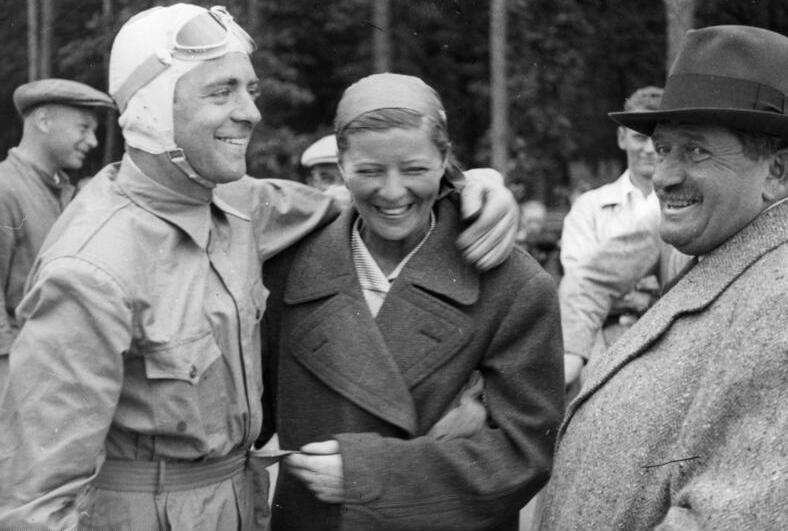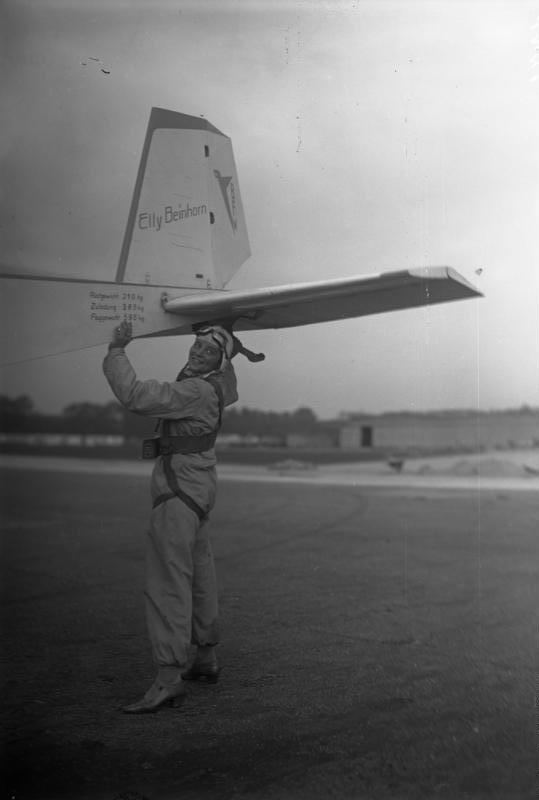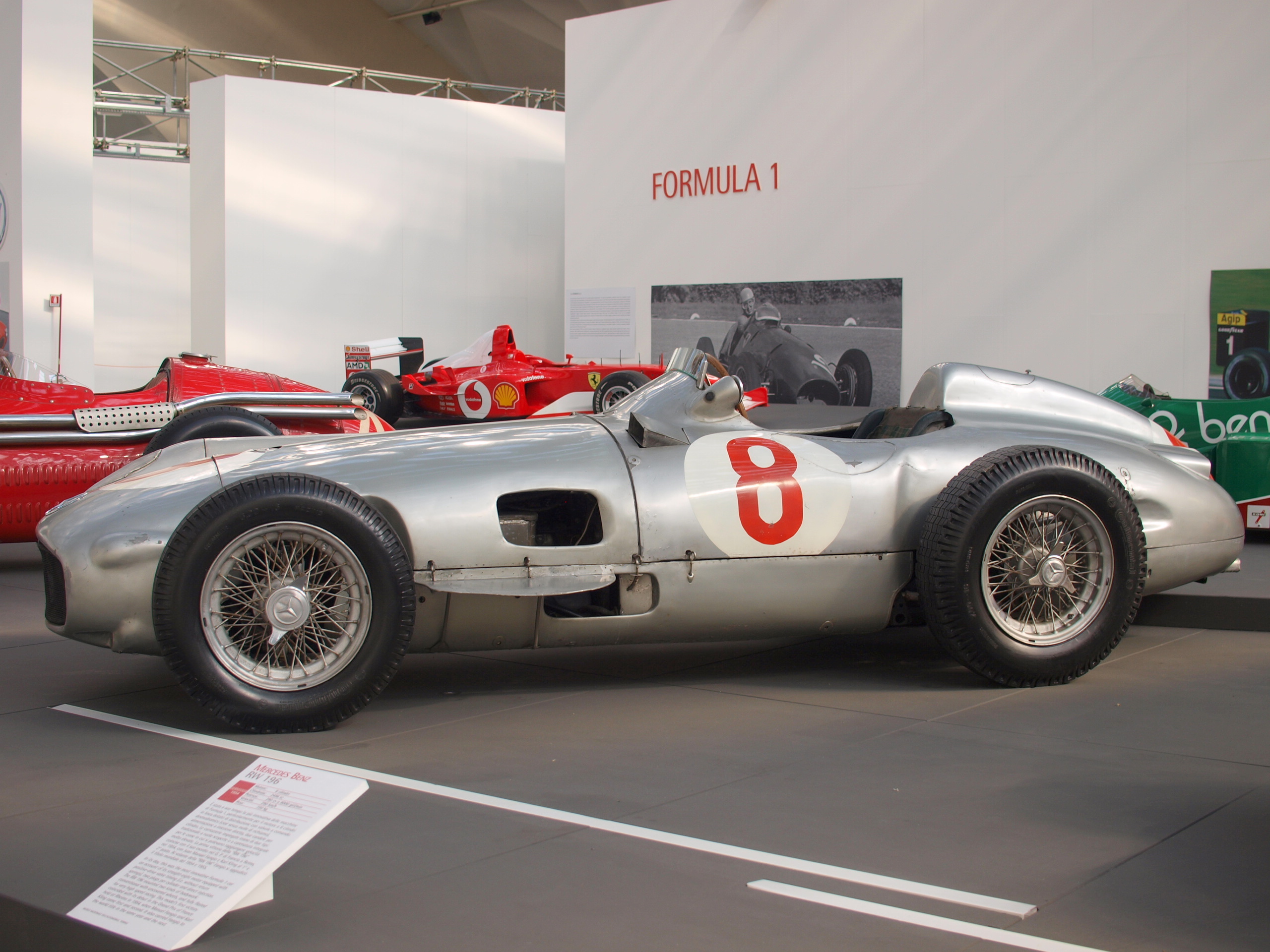|
Bernd Rosemeyer
Bernd Rosemeyer (14 October 1909 – 28 January 1938) was a German racing driver and speed record holder. He is considered one of the greatest racing drivers of all time. Though he was not a member of the Nazi party, he was made a member of the Schutzstaffel, SS for propaganda purposes and held the rank of Hauptsturmführer. Career His father owned an auto & moto garage and repair shop ''Rosemeyer & Co sur Bahnhofstraße'', where young Rosemeyer worked on motorcycles and cars. Having started by racing motorbikes, Rosemeyer became a member of the Auto Union racing team with hardly any experience in racing cars. This was later considered a benefit as he was not yet used to the handling of FR layout, traditional layout race cars. The Ferdinand Porsche-designed mid-engined Silver Arrows of Auto Union were fast, but hard to drive, and only he, Tazio Nuvolari and to a lesser extent Hans Stuck truly mastered the machines. Rosemeyer was also a very skilled mechanic, so, like Hermann ... [...More Info...] [...Related Items...] OR: [Wikipedia] [Google] [Baidu] |
1936 Grand Prix Season
The 1936 Grand Prix season was the third year of the 750 kg Formula. The next iteration of the Mercedes-Benz did not prove successful and the team withdrew during the season to instead prepare for the next one. It therefore fell to the resurgent Auto Union team to dominate the racing. In particular, it was their young, new superstar, Bernd Rosemeyer, who mastered the tricky car and who showed superlative skill in wet conditions. Rosemeyer easily won this season's European Championship by winning three of the four Grands Prix. Once again, it was the old master, Tazio Nuvolari, driving the new Alfa Romeo for the Scuderia Ferrari who proved the greatest challenger to the all-conquering German cars. Without competitive cars, and not wanting to suffer further humiliation from the German teams, the French racing authorities instead ran their major races to their own new sports car regulations. With tensions in Europe rising, politics was increasingly playing a major part in motor- ... [...More Info...] [...Related Items...] OR: [Wikipedia] [Google] [Baidu] |
Elly Beinhorn
Elly Beinhorn (30 May 1907 – 28 November 2007) was a German pilot. Life Early life She was born in Hannover, Germany on 30 May 1907. In 1928, she attended a lecture by famed aviator Hermann Köhl, who had recently completed a historic East-West Atlantic crossing. This lecture is described as the spark that ignited her interest in aviation. At just 21 years old, with funds from a small inheritance (against the wishes of her parents) she moved to Spandau in Berlin where she took flying lessons, at Berlin-Staaken airport, under the tutelage of instructor Otto Thomsen. She soon made her solo flight in a small Klemm KL-20. With her money running out, it was suggested that she give aerobatic displays on the weekends. She found this financially rewarding, but personally unsatisfying. Long-distance flights Long distance flying was her real passion and in 1931 she seized the opportunity to fly to Portuguese Guinea (now Guinea-Bissau) West Africa on a scientific expeditio ... [...More Info...] [...Related Items...] OR: [Wikipedia] [Google] [Baidu] |
Silver Arrows
Silver Arrows (german: link=no, Silberpfeil) was the nickname given by the press to Germany's dominant Mercedes-Benz and Auto Union Grand Prix motor racing cars between 1934 and 1939. The name was later applied to the Mercedes-Benz Formula One and sports cars in 1954 and 1955, then to the Group C prototype racing sports cars that were successful at the Le Mans in the late 1980's, and currently applied to the Mercedes AMG Petronas Formula One Team cars from 2010 to present. For decades until the introduction of sponsorship liveries, each country had its traditional colour in automobile racing. German race cars for their ''Silver Arrows'' silver, Italian for their ''Rosso Corsa'' red, British ones are ''British racing green'' green, French '' Bleu de France'' blue, etc. German cars like the Blitzen Benz were white, as were the three Mercedes that won the 1914 French Grand Prix 1–2–3. On the other hand, Mercedes won the Italian Targa Florio with cars painted red in 19 ... [...More Info...] [...Related Items...] OR: [Wikipedia] [Google] [Baidu] |
Bundesarchiv Bild 183-S16064, Rudolf Caracciola, Bernd Rosemeyer
, type = Archive , seal = , seal_size = , seal_caption = , seal_alt = , logo = Bundesarchiv-Logo.svg , logo_size = , logo_caption = , logo_alt = , image = Bundesarchiv Koblenz.jpg , image_caption = The Federal Archives in Koblenz , image_alt = , formed = , preceding1 = , preceding2 = , dissolved = , superseding1 = , superseding2 = , agency_type = , jurisdiction = , status = Active , headquarters = PotsdamerStraße156075Koblenz , coordinates = , motto = , employees = , budget = million () , chief1_name = Michael Hollmann , chief1_position = President of the Federal Archives , chief2_name = Dr. Andrea Hänger , chief2_position ... [...More Info...] [...Related Items...] OR: [Wikipedia] [Google] [Baidu] |
Vanderbilt Cup
The Vanderbilt Cup was the first major trophy in American auto racing. History An international event, it was founded by William Kissam Vanderbilt II in 1904 and first held on October 8 on a course set out in Nassau County, New York, Nassau County on Long Island, New York. The announcement that the race was to be held caused considerable controversy in New York, bringing a flood of legal actions in an attempt to stop the race. The politicians soon jumped in, holding public hearings on the issue. Vanderbilt prevailed and the inaugural race was run over a course of winding dirt roads through the Nassau County area. Vanderbilt put up a large cash prize hoping to encourage American manufacturers to get into racing, a sport already well organized in Europe that was yielding many factory improvements to motor vehicle technology. The race drew the top drivers and their vehicles from across the Atlantic Ocean, some of whom had competed in Europe's Gordon Bennett Cup in auto racin ... [...More Info...] [...Related Items...] OR: [Wikipedia] [Google] [Baidu] |
Grand Prix Motor Racing
Grand Prix motor racing, a form of motorsport competition, has its roots in organised automobile racing that began in France as early as 1894. It quickly evolved from simple road races from one town to the next, to endurance tests for car and driver. Innovation and the drive of competition soon saw speeds exceeding , but because early races took place on open roads, accidents occurred frequently, resulting in deaths both of drivers and of spectators. A common abbreviation used for Grand Prix racing is "GP" or "GP racing". Grand Prix motor racing eventually evolved into formula racing, and one can regard Formula One as its direct descendant. Each event of the Formula One World Championships is still called a ''Grand Prix''; Formula One is also referred to as "Grand Prix racing". Some IndyCar championship races are also called "Grands Prix". Origins of organized racing Motor racing was started in France, as a direct result of the enthusiasm with which the French public e ... [...More Info...] [...Related Items...] OR: [Wikipedia] [Google] [Baidu] |
Nazi Party
The Nazi Party, officially the National Socialist German Workers' Party (german: Nationalsozialistische Deutsche Arbeiterpartei or NSDAP), was a far-right politics, far-right political party in Germany active between 1920 and 1945 that created and supported the ideology of Nazism. Its precursor, the German Workers' Party (; DAP), existed from 1919 to 1920. The Nazi Party emerged from the Extremism, extremist German nationalism, German nationalist, racism, racist and populism, populist paramilitary culture, which fought against the communism, communist uprisings in post–World War I Germany. The party was created to draw workers away from communism and into nationalism. Initially, Nazi political strategy focused on anti–big business, anti-bourgeoisie, bourgeois, and anti-capitalism, anti-capitalist rhetoric. This was later downplayed to gain the support of business leaders, and in the 1930s, the party's main focus shifted to Antisemitism, antisemitic and Criticism of ... [...More Info...] [...Related Items...] OR: [Wikipedia] [Google] [Baidu] |
Czechoslovakian Grand Prix
The Czechoslovakian Grand Prix (Czech: ''Velká cena Československa''; Slovak: ''Československá Grand Prix'') was a Grand Prix motor racing event held in 1949 at the Masaryk Circuit now referred to as the Brno Circuit. It was held in the town of Brno in Czechoslovakia (now the Czech Republic). The Masaryk circuit race was first held on September 28, 1930. From 1934 onwards, the race was dominated by the German Silver Arrows. In 1937, several spectators were killed or injured when Hermann Lang skidded off the track. The spectators had been in a prohibited area but Lang was sued anyway. Due to the German occupation in 1938 the race was discontinued until 1949 when the Masaryk Circuit was shortened to . The 1949 Czechoslovakian Grand Prix, part of the world Grand Prix motor racing, raced in the opposite direction than the pre-war races, drew a crowd in excess of 400,000 people. However, this would be the last Czechoslovakian Grand Prix. 27 years later a Czechoslovak Race was ... [...More Info...] [...Related Items...] OR: [Wikipedia] [Google] [Baidu] |
Czechoslovakia
, rue, Чеськословеньско, , yi, טשעכאסלאוואקיי, , common_name = Czechoslovakia , life_span = 1918–19391945–1992 , p1 = Austria-Hungary , image_p1 = , s1 = Czech Republic , flag_s1 = Flag of the Czech Republic.svg , s2 = Slovakia , flag_s2 = Flag of Slovakia.svg , image_flag = Flag of Czechoslovakia.svg , flag = Flag of Czechoslovakia , flag_type = Flag(1920–1992) , flag_border = Flag of Czechoslovakia , image_coat = Middle coat of arms of Czechoslovakia.svg , symbol_type = Middle coat of arms(1918–1938 and 1945–1961) , image_map = Czechoslovakia location map.svg , image_map_caption = Czechoslovakia during the interwar period and the Cold War , national_motto = , anthems = ... [...More Info...] [...Related Items...] OR: [Wikipedia] [Google] [Baidu] |
Masaryk Circuit
The Masaryk circuit ( cz, Masarykův okruh) or Masarykring, also referred to as the Brno Circuit, refers to two motorsport race tracks located in Brno, Czech Republic. The original street circuit was made up of public roads, and at its longest measured . In 1949, events such as the Czechoslovakian Grand Prix attracted top teams and drivers. The track is named after the first president of Czechoslovakia, Tomáš Garrigue Masaryk. Racing on the old roads ended after 1986, when the new (current) circuit was opened. The annual Motorcycle Grand Prix of the Czech Republic is the circuit's most important event. It has been held here since 1950 and is the most famous motor race in the Czech Republic. The race has been part of the World Grand Prix since 1965. The FIA World Touring Car Championship, FIA GT1 World Championship, Formula Two and the Superbike World Championship also raced at the circuit. The Czech Republic Motorcycle Grand Prix is more of a promoter event than a prof ... [...More Info...] [...Related Items...] OR: [Wikipedia] [Google] [Baidu] |
Brno
Brno ( , ; german: Brünn ) is a city in the South Moravian Region of the Czech Republic. Located at the confluence of the Svitava and Svratka rivers, Brno has about 380,000 inhabitants, making it the second-largest city in the Czech Republic after the capital, Prague, and one of the 100 largest cities of the EU. The Brno metropolitan area has almost 700,000 inhabitants. Brno is the former capital city of Moravia and the political and cultural hub of the South Moravian Region. It is the centre of the Czech judiciary, with the seats of the Constitutional Court, the Supreme Court, the Supreme Administrative Court, and the Supreme Public Prosecutor's Office, and a number of state authorities, including the Ombudsman, and the Office for the Protection of Competition. Brno is also an important centre of higher education, with 33 faculties belonging to 13 institutes of higher education and about 89,000 students. Brno Exhibition Centre is among the largest exhibition ... [...More Info...] [...Related Items...] OR: [Wikipedia] [Google] [Baidu] |
Rudolf Caracciola
Otto Wilhelm Rudolf CaracciolaBolsinger and Becker (2002), p. 63 (30 January 1901 – 28 September 1959) was a racing driver from Remagen, Germany. He won the European Drivers' Championship, the pre-1950 equivalent of the modern Formula One World Championship, an unsurpassed three times. He also won the European Hillclimbing Championship three times – twice in sports cars, and once in Grand Prix cars. Caracciola raced for Mercedes-Benz during their original dominating Silver Arrows period, named after the silver colour of the cars, and set speed records for the firm. He was affectionately dubbed ''Caratsch'' by the German public,Reuss (2006), p. 20 and was known by the title of ''Regenmeister'', or "Rainmaster", for his prowess in wet conditions. Caracciola began racing while he was working as apprentice at the Fafnir automobile factory in Aachen during the early 1920s, first on motorcycles and then in cars. Racing for Mercedes-Benz, he won his first two Hillclimbing Champio ... [...More Info...] [...Related Items...] OR: [Wikipedia] [Google] [Baidu] |






_between_1930_and_today_combined.png)

